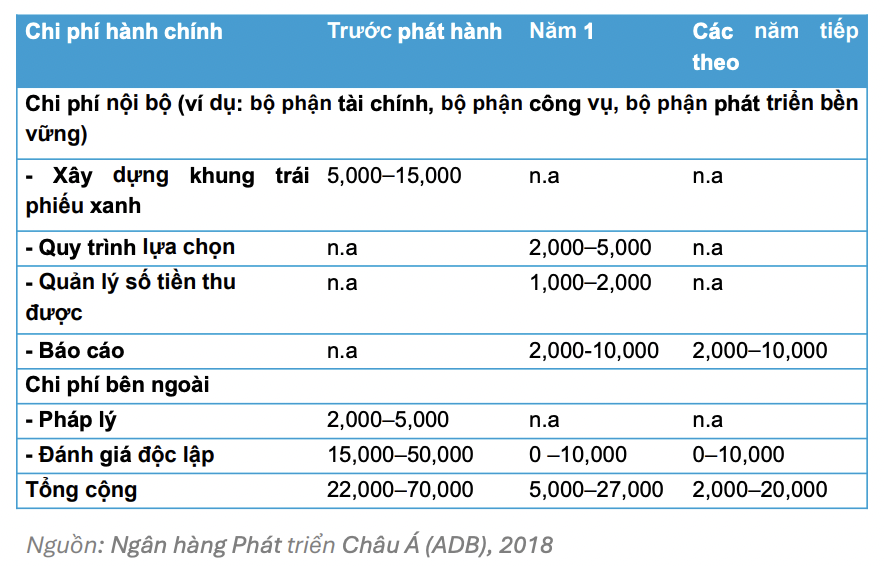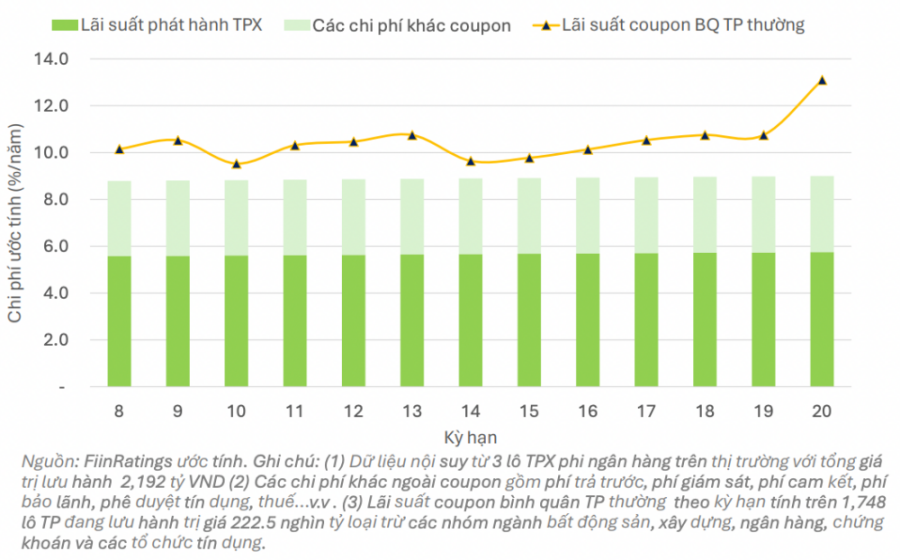A recent analysis by FiinRatings said that, based on experience from foreign markets and international research, specifically, based on the cost simulation model of the World Economic Forum, the total cost of issuing green bonds includes direct costs (one-time and periodic) and indirect costs from compliance with disclosure standards and sustainable development goals.
In theory, this cost is commensurate with the benefits. However, in practice, the difference can be significant, especially for first-time or small-scale issuers, creating a large cost barrier when accessing the green bond capital channel.
 |
| Costs incurred when issuing green bonds (Unit: USD) |
The cost of preparing for the pre-issuance stage usually accounts for the majority. Therefore, businesses need to prepare carefully from the pre-issuance stage, including: selecting projects that meet green criteria, building a transparent capital management system, and establishing a process to monitor capital efficiency.
To reduce these barriers, support from stakeholders, especially the public sector, is needed to increase benefits and reduce costs, promoting the development of green financial markets.
FiinRatings estimates that the recent green bond issuances in the Vietnamese market have an issuance interest rate of around 6%. Related costs such as guarantee fees range from 1.5-2.5% depending on the assessment of the guarantee organization, prepayment fees of around 1-2%, commitment fees of around less than 1% and other fees.
In general, the total estimated cost of green bond issuance by enterprises is still about 1-2% lower than the average interest rate on regular bonds issued by enterprises in the same industry group.
 |
| Estimates of coupon rates and other costs over time for some recent green bond issues by non-financial corporations |
Green bond issuance in the Vietnamese market is still quite modest. However, this market is expected to develop more strongly in the coming time thanks to a number of important drivers.
Firstly, the legal framework is increasingly complete and synchronous, with the Government issuing policies, national green classification criteria, as well as tax incentives and securities services to encourage the issuance and investment in green bonds. This creates a solid, transparent and favorable legal corridor for businesses and investors to participate in the market.
Second, investor demand is growing due to the trend of investing according to ESG (Environmental, Social and Governance) criteria. Investors are not only looking for profits but also interested in projects that have a positive impact on the environment and sustainable development. This drives the increase in demand for green bonds as a financial instrument that is both efficient and socially meaningful.
And finally, FiinRatings assessed that businesses are increasingly proactive in building green financial frameworks and conducting independent assessments according to international standards such as those of the Climate Bonds Initiative (CBI) and the International Capital Market Association (ICMA). This standardization helps enhance the reputation and transparency of green bonds, creating trust for domestic and foreign investors.
Source: https://baodautu.vn/phat-hanh-trai-phieu-xanh-chi-phi-co-la-rao-can-d303224.html
















































































































Comment (0)